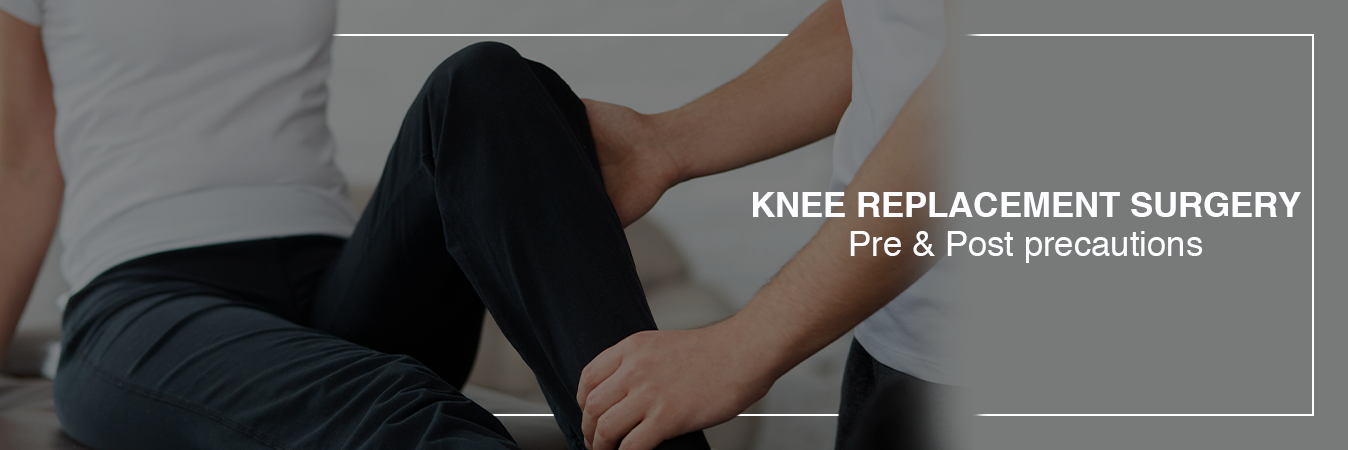Knee Replacement surgery, one of the most successful surgical procedures, refers to replacing a badly damaged knee surface with a metal implant. They have been increasingly commonised because of improved implants, surgical expertise and latest technology. If you are going under a surgery or have undergone one, a wholesome set of pre and post precautions have to be taken.
Within this section you can expect a holistic explanation of all the pre-surgery and post-surgery preventive measures that you need to plan and take before and after you undergo a knee replacement surgery.
Pre-operative Measures
Replacement of an important part of your body essentiates replacement of some basic lifestyle choices. Following are the three essential domains of one’s lifestyle to be altered:
Home Set-Up: Essential fixes in the home set-up need to be introduced. Hallways, walkways, rooms and outside stairs should be ensured to be free of clutter and tripping hazards. Scatter rugs, footstools, non-slip surfaces can be used. Areas frequently used by the patient should be properly lighted.
Bathroom: Toilet seats should be raised and arm rests must be placed for easy access to commode. In case the bathtub is used for bathing, sliding doors should be replaced with a shower curtain, a hand-held shower hose is to be installed, grab bars in the bathtub and toilet seats are useful to assist you. DO NOT use towel racks or toilet paper holders to stand or sit.
Exercise: Exercising before surgery will make your muscles stronger, improve your endurance, help keep your joints moving. Activities such as gentle stretching & strengthening, swimming or water walking should be tried as they put less stress on your joints. Exercising before surgery will help you to build confidence and knowledge for post-surgery life.
Post-operative Measures
Once you have undergone the replacement surgery, CARE MEASURES are crucial for successful recovery. Enlisted below are vital steps to be taken:
Physical Therapy:The physical therapist will review some exercises such as quad sets, dangles, leg extension and straight leg raises. The continuous passive motion (CPM) machine is an important piece of equipment for your rehabilitation, suggestive usage of CPM is 4 hours every day. But each case is different and therapist consultation is advised for better results.
Pain and Swelling: Pain and Swelling in the operative leg is a normal part of the post-operative course. Prescribed medication can be taken after every 4 hours or as needed which may cause nausea, constipation and a light-headed sensation. Whereas swelling can be reduced by elevating your legs or lying down for 30 minutes or an hour during the day.
Incision: You should keep your wound dry until after the staples are removed approximately 12 days after the surgery.
Temperature: Your temperature may be slightly elevated for several days post-surgery. However, if fever persists above 101°F accompanied by chills, sweats, increased pain at the incision, you should call the doctor’s office as these may be signs of infection.
Despite all these pre and post operative care measures, a list of these activities is worth considering during the course of rehabilitation. Post surgery, driving should be avoided for six weeks. Handrail or banister, alongside stairs, should be used for stability. Prior to any dental, gastrointestinal or surgical procedure, doctor must be notified of the joint replacement as antibiotics may be prescribed for joint infection.


